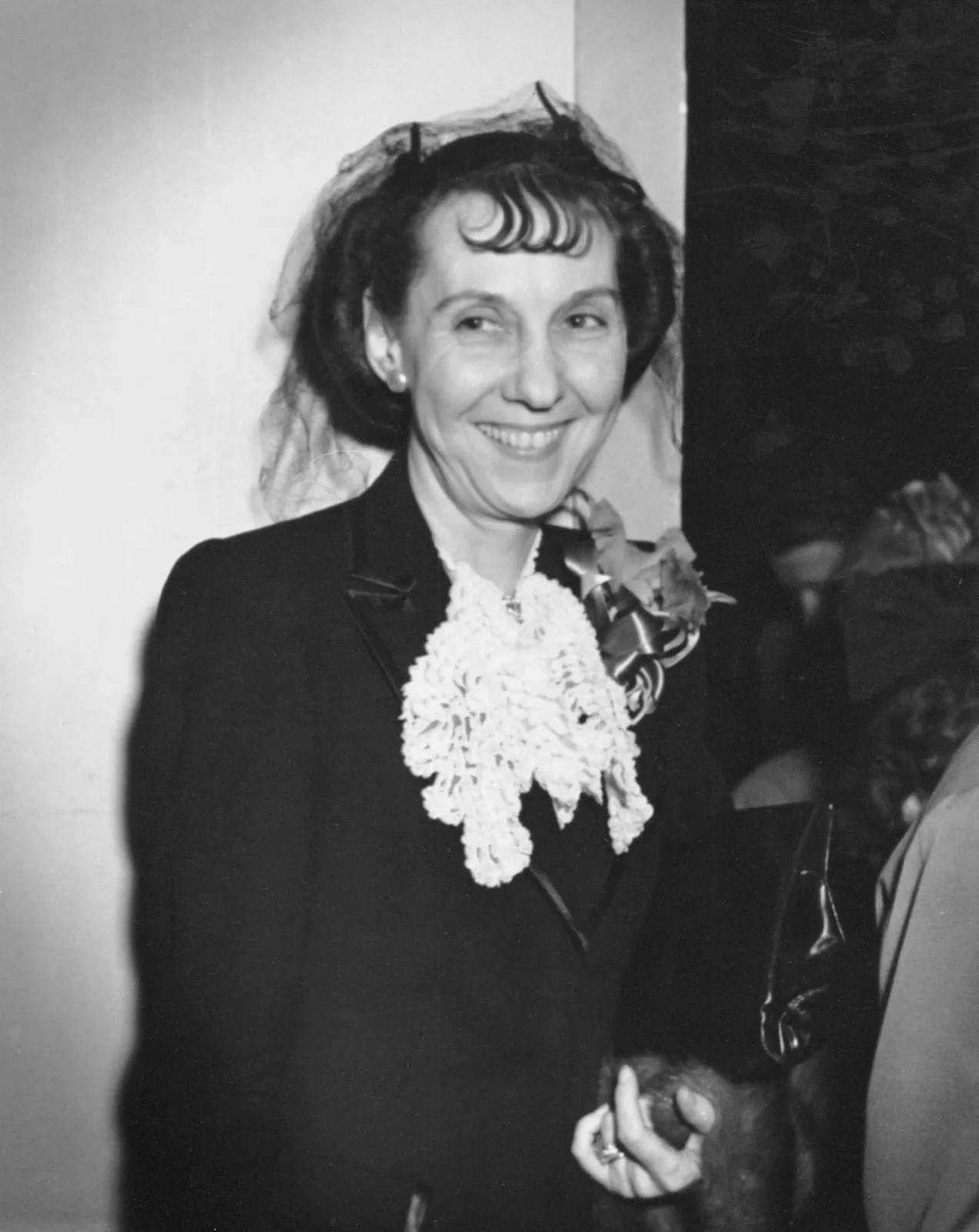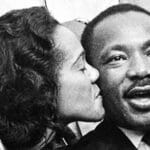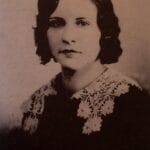Meet Mamie Lincoln Isham, the granddaughter of the legendary Abraham Lincoln. However, Mamie was more than just a name tied to her famous grandfather; she lived a life of luxury and influence during America’s glamorous Gilded Age. Let’s delve into her incredible journey, the challenges she encountered, and how she ultimately left her own unique mark on history. This is the story of Mamie Lincoln Isham, a woman who demonstrated that an extraordinary life is attainable even when born in the shadow of a celebrated lineage.
Navigating Life in the Shadow of a Legacy
Mamie Lincoln Isham—the name alone evokes a life interwoven with historical significance. As the granddaughter of President Abraham Lincoln, Mamie’s life was undoubtedly privileged. Yet, her story goes beyond grand balls and societal gatherings. While she enjoyed the comforts that came with her family name, Mamie’s journey is one of navigating the restrictive social expectations placed upon women during the Gilded Age. It’s a glimpse behind the curtain of a well-known family, revealing a woman’s quest for self-discovery amidst towering legacies and evolving social norms.
Imagine growing up with the weight of the Lincoln name. Mamie’s father, Robert Todd Lincoln, was the only one of President Lincoln’s sons to survive to adulthood. This placed immense pressure on the family to uphold the legacy of “Honest Abe.” While her brothers pursued careers in politics, seemingly eager to follow in their grandfather’s footsteps, Mamie appeared to desire a different path. She married Charles Bradford Isham, a prosperous lawyer and a prominent figure in the railroad industry. Their life was one of comfort and social standing, but it likely came with its own set of unspoken societal expectations.
During this era, women, even those from influential families, were often expected to prioritize roles as wives and mothers above all else. Ambitions outside the domestic sphere were often discouraged. While we can’t know Mamie’s innermost thoughts, it’s plausible that a woman with her background harbored dreams and aspirations beyond the traditional roles assigned to women during that time. She possessed a love for music and art, but these were viewed as mere hobbies, not pursuits deemed appropriate for a woman of her status. One can’t help but wonder what she might have achieved had she been born in a different era.
Adding another layer to Mamie’s story is the fact that her son, Lincoln Isham, represented the last of the direct Lincoln descendants. His death without children marked the end of an era for the family. One can only imagine how this affected Mamie. She became a living link to a bygone era, a time of national turmoil and profound personal tragedy for her family.
Mamie Isham’s life provides a captivating window into a pivotal period in American history. Her story intertwines the grandeur and societal shifts of the Gilded Age with the personal struggles of a woman striving to define herself while living in the shadow of her legendary grandfather. It’s a reminder that history is more than just dates and events; it’s about individuals grappling with emotions, expectations, and challenges, even amidst privilege and wealth.
The Enduring Mystery: Who is Abraham Lincoln’s Last Descendant?
The question of Abraham Lincoln’s descendants often arises, prompting inquiries about whether any of his children or grandchildren carried on the family name. The answer is surprisingly complex. The last widely acknowledged direct descendant of “Honest Abe” was his great-grandson, Robert Todd Lincoln Beckwith.
Born in 1904, Robert’s life took a decidedly different path than his famous ancestor. While Abraham Lincoln was deeply involved in politics, Robert chose a simpler life as a farmer— a testament to the unpredictable nature of family legacies.
However, the question of Lincoln’s last descendant isn’t without its mysteries. While Robert is generally accepted as the final direct descendant, whispers and rumors persist about other potential descendants. Some families recount stories passed down through generations, claiming a connection to the president. Others point to intriguing historical clues that remain open to interpretation.
Sadly, Robert’s death in 1985 seemingly marked the end of the Lincoln family line as we know it. Yet, the passage of time and the emergence of new information always hold the potential to reshape our understanding of history.
The Enigmatic Life of Lincoln Isham
Lincoln “Linc” Isham, born in 1892, occupied a unique space in history as the last male descendant of President Abraham Lincoln. However, unlike his great-grandfather or his grandfather, Robert Todd Lincoln, who both pursued political paths, Isham chose a life surprisingly removed from the public eye.
This decision raises an intriguing question: why would someone so closely linked to one of America’s most famous figures opt for a life away from the spotlight? While no definitive answer exists, historians have explored several possibilities.
One theory suggests that the weight of the Lincoln legacy felt overwhelming. The pressure of carrying such a significant name might have led Isham to seek his own distinct path. Another possibility is that the tragedies surrounding his family, particularly the assassination of his great-grandfather, left a lasting impact, leading him to withdraw from the public eye.
Unfortunately, our understanding of Isham’s life is limited by a scarcity of written records and personal accounts. His motivations remain largely a mystery.
Unraveling the Lineage: Are There Any Living Descendants of Mary Todd Lincoln?
The Lincoln family tree is a source of enduring fascination, and the question of whether Mary Todd Lincoln has any living descendants is a common one. Sadly, the answer is no. While the Lincolns had four sons, only Robert Todd Lincoln reached adulthood, placing the responsibility of continuing the family line solely on his shoulders.
Robert had three children, including a daughter named Mary, affectionately known as “Mamie.” Born in 1869, she was doted on by her father. It’s worth noting, however, that Mamie didn’t follow her father or uncles into the realm of politics. Instead, she married Charles Bradford Isham and focused on raising a family.
This choice likely reflects the societal pressures of the Gilded Age. Women, regardless of social standing, were generally expected to find fulfillment within the domestic sphere. While Mamie had passions for art and music, these were often regarded as mere hobbies for women of her stature.
The Lincoln line tragically ended with Mamie’s son, Lincoln Isham, who died in 1971 without having children. His death marked a poignant end to an era for this notable American family.
For more information on enslaved women who have been erased from history, read the compelling story of Madison Hemings. Similarly, Melody Brynner provides a valuable perspective on the topic.
- Unveiling the Enigma: Mansoureh Khojasteh Bagherzadeh’s Public Appearances & Private Life in Iran - July 18, 2025
- Unveiling the Mystery: Mansoureh Khojasteh Bagherzadeh’s Husband: A Rare Glimpse into a Private Life - July 18, 2025
- Unveiling Masoud Khamenei’s Mother: Power, Influence, and Iran’s Future - July 18, 2025

















1 thought on “Mamie Lincoln Isham: Beyond the Lincoln Legacy, A Woman of Gilded Age America”
Comments are closed.